Vasileios Syrris
SatImNet: Structured and Harmonised Training Data for Enhanced Satellite Imagery Classification
Jun 18, 2020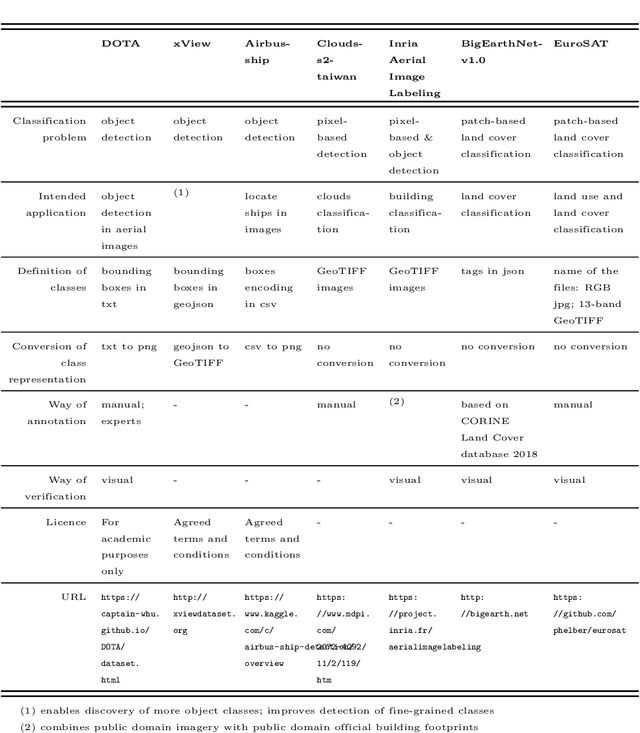
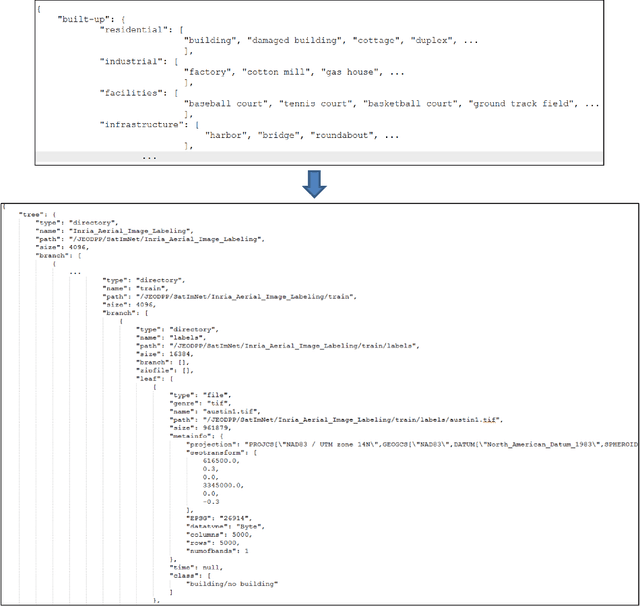
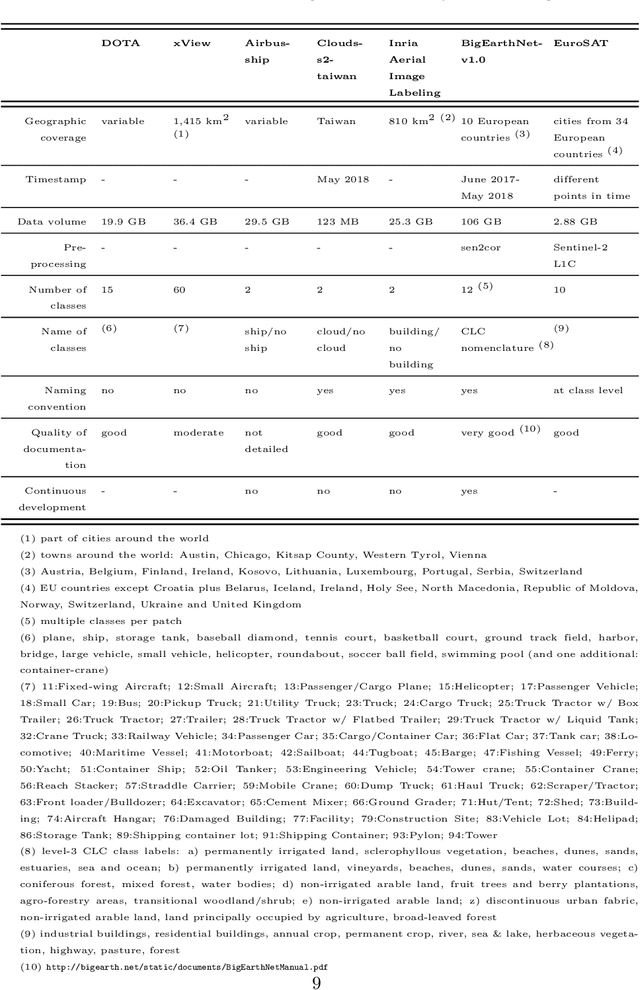
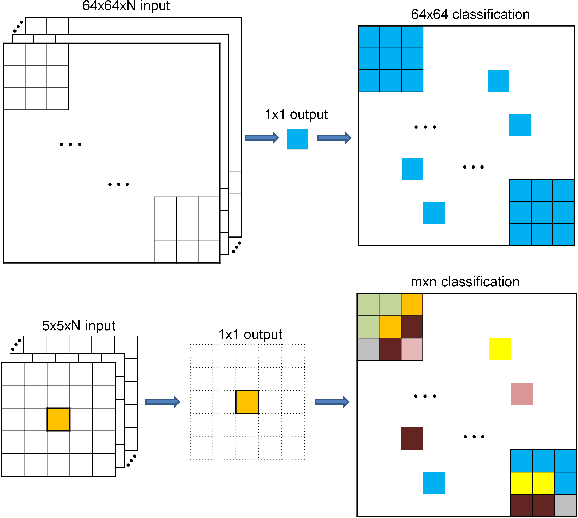
Abstract:Automatic supervised classification of satellite images with complex modelling such as deep neural networks requires the availability of representative training datasets. While there exists a plethora of datasets that can be used for this purpose, they are usually very heterogeneous and not interoperable. This prevents the combination of two or more training datasets for improving image classification tasks based on machine learning. To alleviate these problems, we propose a methodology for structuring and harmonising open training datasets on the basis of a series of fundamental attributes we put forward for any such dataset. By applying this methodology to seven representative open training datasets, we generate a harmonised collection called SatImNet. Its usefulness is demonstrated for enhanced satellite image classification and segmentation based on convolutional neural networks. Data and open source code are provided to ensure the reproducibility of all obtained results and facilitate the ingestion of additional datasets in SatImNet.
Convolutional Neural Networks for Global Human Settlements Mapping from Sentinel-2 Satellite Imagery
Jun 05, 2020
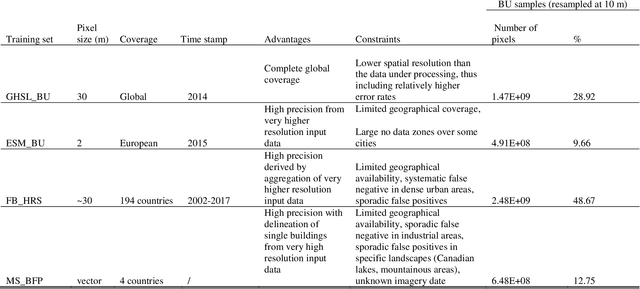


Abstract:Spatially consistent and up-to-date maps of human settlements are crucial for addressing policies related to urbanization and sustainability especially in the era of an increasingly urbanized world. The availability of open and free Sentinel-2 data of the Copernicus Earth Observation programme offers a new opportunity for wall-to-wall mapping of human settlements at a global scale. This paper presents a deep-learning-based framework for a fully automated extraction of built-up areas at a spatial resolution of 10 meters from a global composite of Sentinel-2 imagery. A multi-neuro modelling methodology, building on a simple Convolution Neural Networks architecture for pixel-wise image classification of built-up areas is developed. The deployment of the model on the global Sentinel-2 image composite provides the most detailed and complete map reporting about built-up areas for reference year 2018. The validation of the results with an independent reference dataset of building footprints covering 277 sites across the world, establishes the reliability of the built-up layer produced by the proposed framework and the model robustness. The results of this study contribute to cutting-edge research in the field of automated built-up areas mapping from remote sensing data and establish a new reference layer for the analysis of the spatial distribution of human settlements across the rural-urban continuum
 Add to Chrome
Add to Chrome Add to Firefox
Add to Firefox Add to Edge
Add to Edge